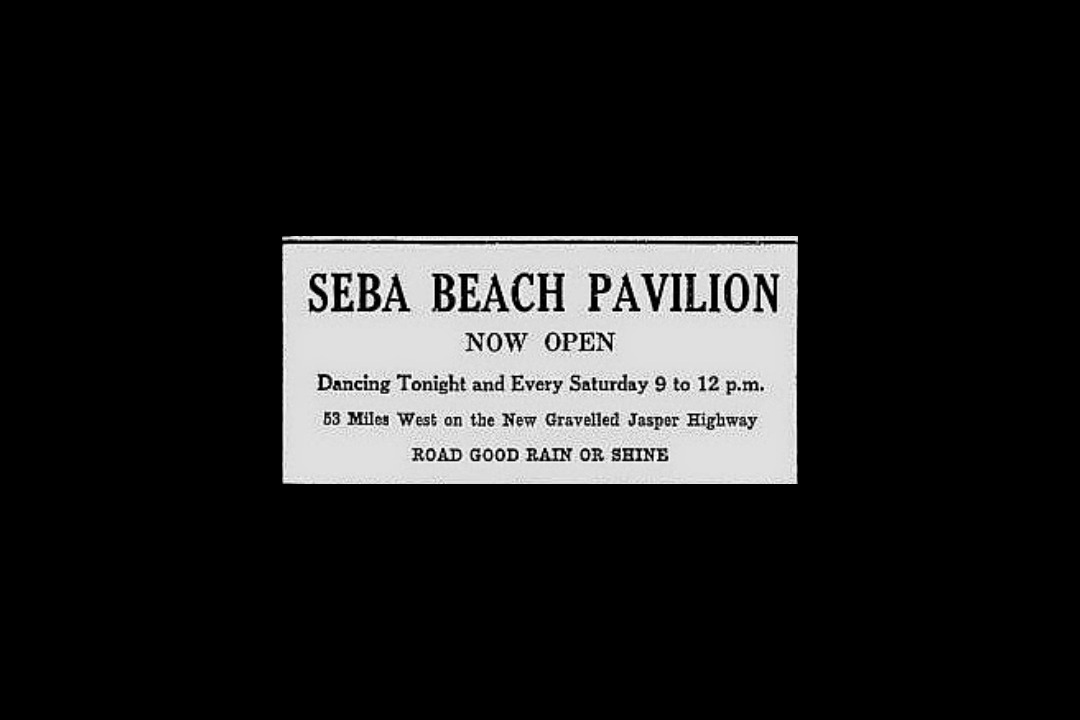On this day in 1930, Seba Beach, the tiny summer village west of Edmonton on the shore of Lake Wabamun, was opening its new pavilion to residents and visitors.
Lake Wabamun has been drawing people to its waters for thousands of years. The lake was formed by the retreat of the Laurentide Ice Sheet, a massive sheet of kilometres-thick ice that blanketed most of North America. The receding ice left behind a lake that was both shallow and long — nearly 20 km from end to end. The lake eventually became rich in fish and a popular landing spot for migrating birds (European settlers would later call it "White Whale Lake" because of the seemingly endless number of whitefish in its waters).
The lake provided a reliable food source for Indigenous people, including the ancestors of the Paul Band. Research suggests humans frequented the Wabamun area as far back as 10,000 years ago.
The village of Seba Beach, of course, is much more recent. The first European homesteaders were R. P. Cull and Arthur Hovey, who both came west from Quebec and built cabins on the water in 1906. It would be a few years until the construction of the railroad nearby made the lake much easier to access from Edmonton. Seba Beach and other small summer villages on the lake became popular destinations for those seeking a break from city life.
The use of the lake and the surrounding area exploded. By 1914, Lake Wabamun had "the largest fleet of motorboats and launches of any lake in the province," according to the Edmonton Bulletin. A couple of years later, the Edmonton YWCA began to hold camping programs near Seba Beach, where they built a hostel building. The village quickly expanded with all the new visitors — it soon added a dance hall, a general store, and other amenities.
The railway brought tourism but also industrial development. A commercial fishing industry began to flourish, harvesting the lake's whitefish to be shipped off to customers in Canada and the United States. The demand was so great that a cannery opened for a time in Seba Beach. During the winter, the ice covering the lake was cut and transported by rail for refrigeration.
By the 1920s, sailing racing had become a popular pastime on the lake, and the Seba Boat Club formed. Given the size of Wabamun, the lake was home to several small sailing clubs, which would hold yacht races between them. The Seba Beach club would also invite other racers to Wabamun — including the Edmonton Yacht Club, which formed on Cooking Lake in 1923. Eventually, the Edmonton club would do more than just visit. In 1945, the Edmonton Yacht Club moved to its new location in Seba Beach, where it remains until this day — one of the boating clubs that continue to sail on Lake Wabamun.
Seba Beach and Lake Wabamun continue to be extremely popular places for Albertans to visit in the summer. Perhaps too popular. The health of the lake is a concern — heavy recreational use, construction, coal mining, and power generation in the Lake Wabamun area have contributed to higher levels of things like arsenic, cadmium, and copper in water samples. And in 2005, a derailed train spilled almost 800,000 litres of petroleum into the lake, which caused widespread damage to the lake and prompted a decade of rehabilitation efforts.
And like many Alberta lakes, Wabamun has seen frequent issues with Cyanobacteria (green-blue algae) blooms, which can harm people and wildlife. Algae advisories were issued in 2012 and 2022. While Wabamun has not seen any such warnings this year, blooms were spotted on other lakes nearby earlier this week.
This is based on a clipping found on Vintage Edmonton, a daily look at Edmonton's history from armchair archivist @revRecluse — follow @VintageEdmonton for daily ephemera via Twitter.

